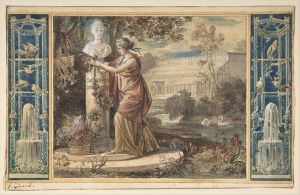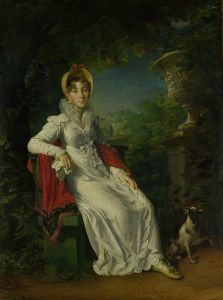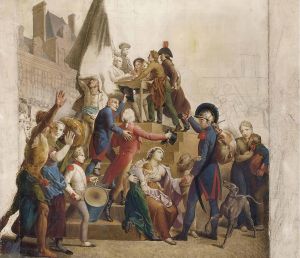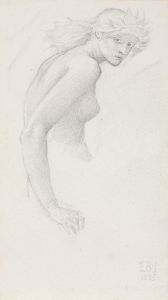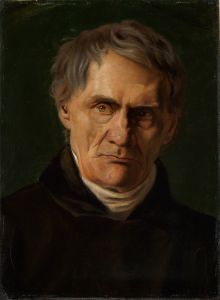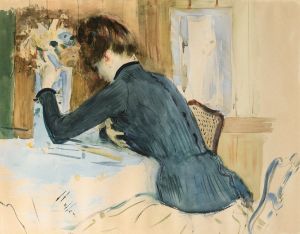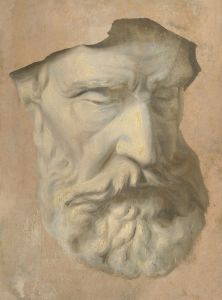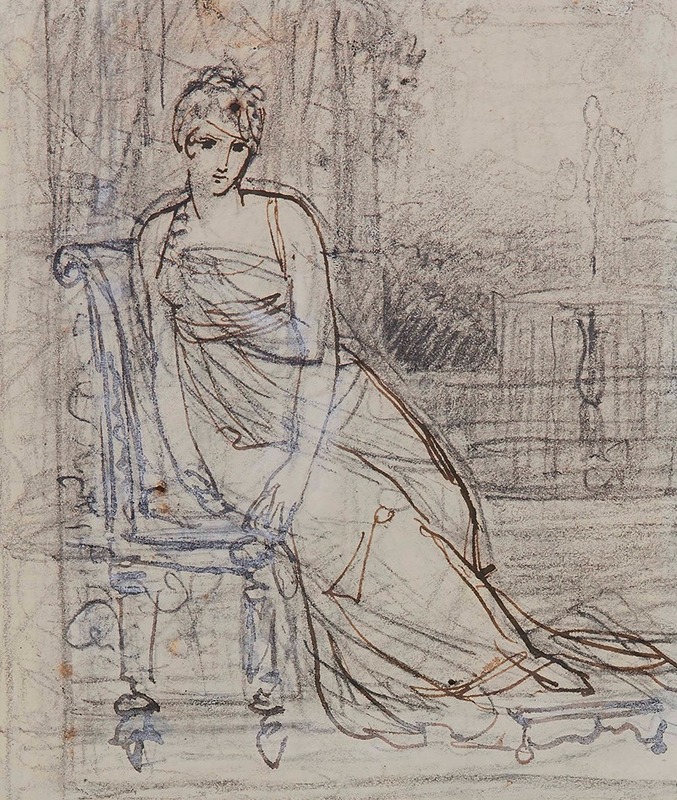
Étude pour un portrait de Juliette Récamier
A hand-painted replica of François Gérard’s masterpiece Étude pour un portrait de Juliette Récamier, meticulously crafted by professional artists to capture the true essence of the original. Each piece is created with museum-quality canvas and rare mineral pigments, carefully painted by experienced artists with delicate brushstrokes and rich, layered colors to perfectly recreate the texture of the original artwork. Unlike machine-printed reproductions, this hand-painted version brings the painting to life, infused with the artist’s emotions and skill in every stroke. Whether for personal collection or home decoration, it instantly elevates the artistic atmosphere of any space.
Étude pour un portrait de Juliette Récamier is a preparatory study by the French artist François Gérard, created in the early 19th century. François Gérard, a prominent painter of the Neoclassical period, was known for his portraits of influential figures in French society. This particular study was intended for a portrait of Juliette Récamier, a renowned socialite and patron of the arts during the Napoleonic era.
Juliette Récamier, born Jeanne-Françoise Julie Adélaïde Bernard in 1777, was celebrated for her beauty, intelligence, and the influential salon she hosted in Paris. Her salon attracted many of the leading intellectuals, writers, and politicians of the time, including figures like François-René de Chateaubriand and Madame de Staël. Récamier's charm and social connections made her a popular subject for artists, and she was immortalized in several portraits by different painters.
François Gérard, a student of Jacques-Louis David, was one of the most sought-after portraitists of his time. His works were characterized by their elegance, attention to detail, and the ability to capture the personality and status of his subjects. Gérard's study of Juliette Récamier was part of his effort to create a full portrait that would reflect her grace and social standing.
The study itself is a testament to Gérard's skill in capturing the essence of his subjects through preliminary sketches. Although the final portrait of Juliette Récamier by Gérard is not as widely recognized as the famous portrait by Jacques-Louis David, the study remains an important piece in understanding Gérard's artistic process and his approach to portraiture.
Étude pour un portrait de Juliette Récamier showcases Gérard's ability to convey the delicate features and poise of Récamier, even in a preliminary form. The study likely served as a reference for the artist as he worked on the final composition, allowing him to experiment with different poses, lighting, and expressions before committing to the final version.
While the exact details of the final portrait's completion and current whereabouts are not well-documented, Gérard's study remains a valuable piece for art historians and enthusiasts interested in the Neoclassical period and the cultural milieu of early 19th-century France. It provides insight into the artistic practices of the time and the significance of portraiture in capturing the likeness and social importance of individuals like Juliette Récamier.
In summary, Étude pour un portrait de Juliette Récamier by François Gérard is a notable example of Neoclassical portraiture, reflecting the artist's skill and the cultural prominence of its subject. Through this study, Gérard contributes to the rich tapestry of art history, offering a glimpse into the world of one of France's most captivating social figures.







